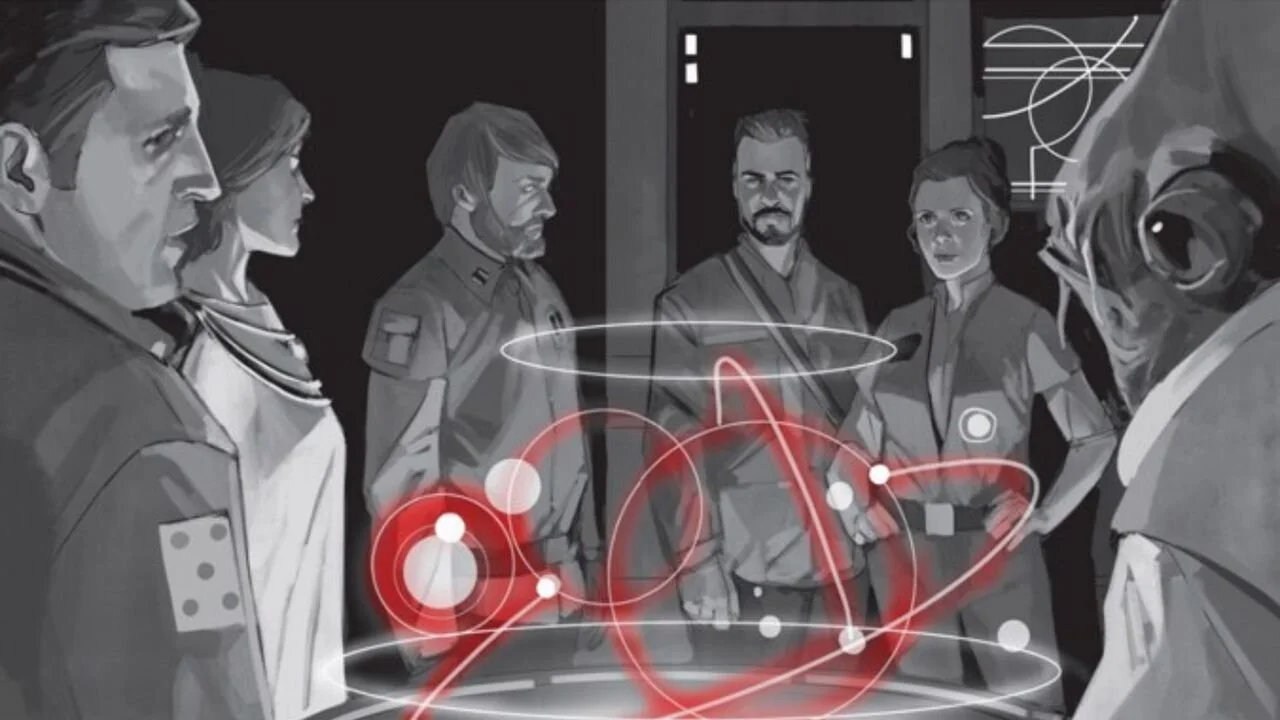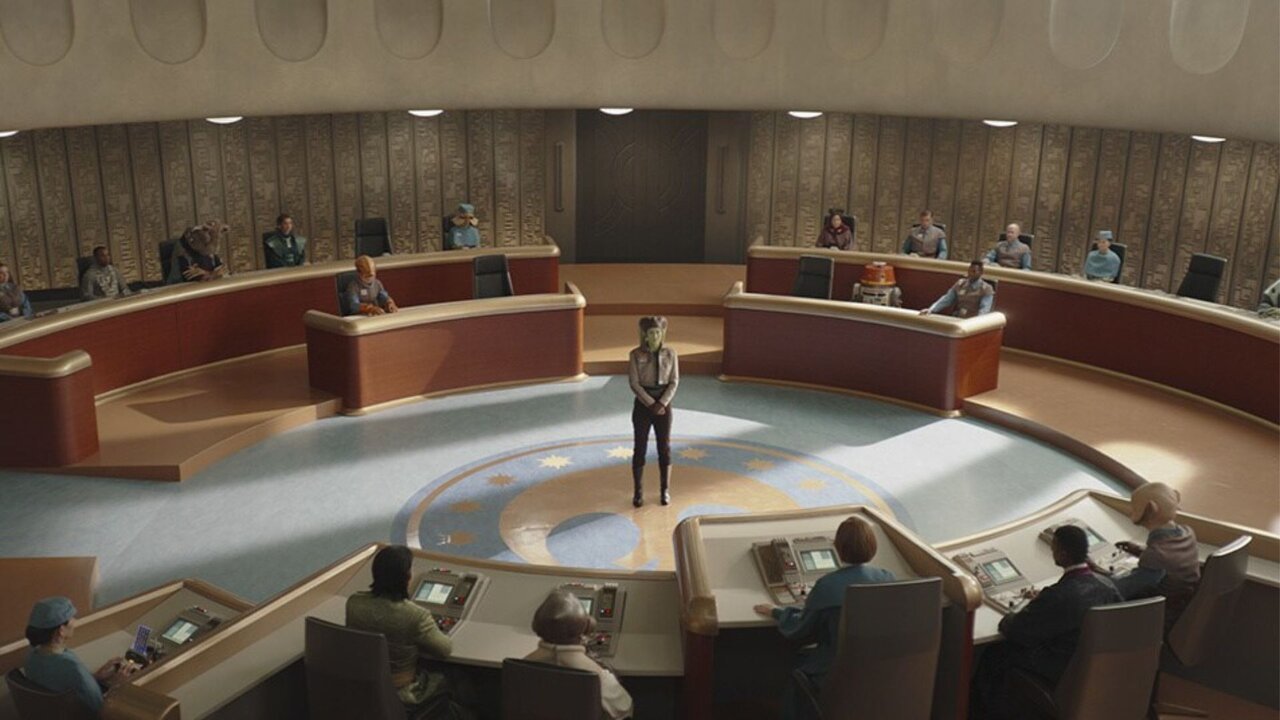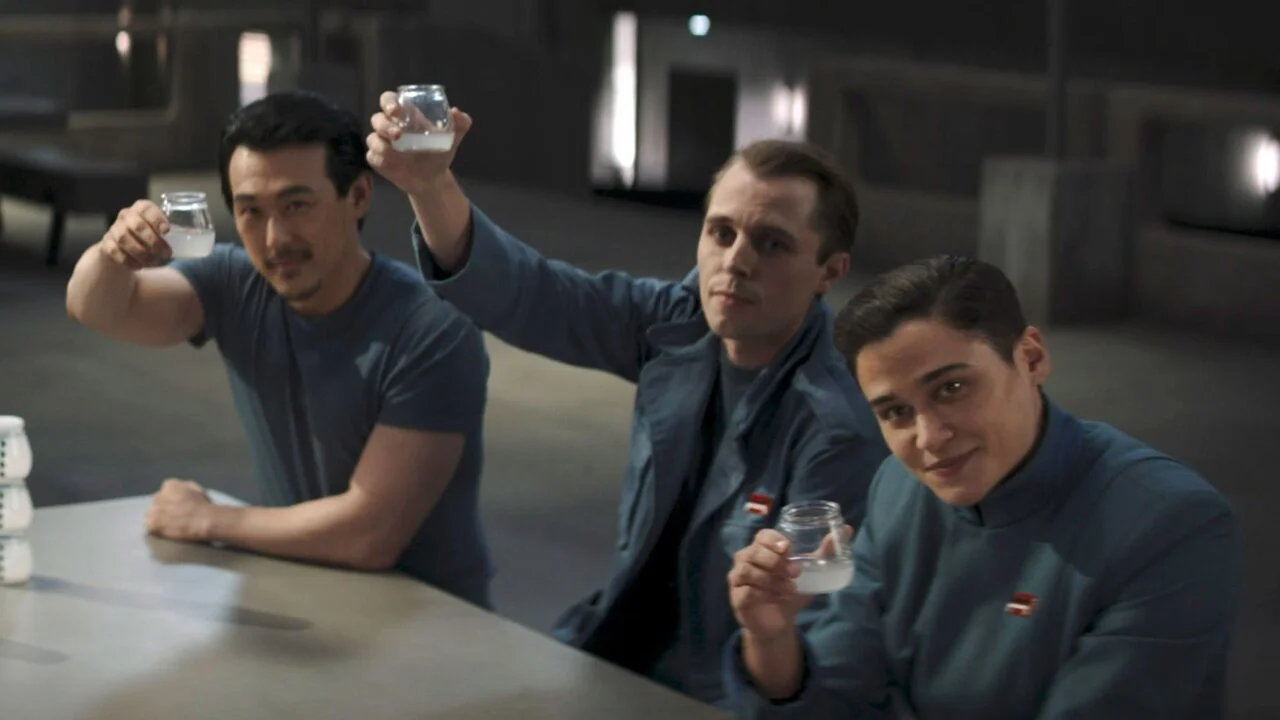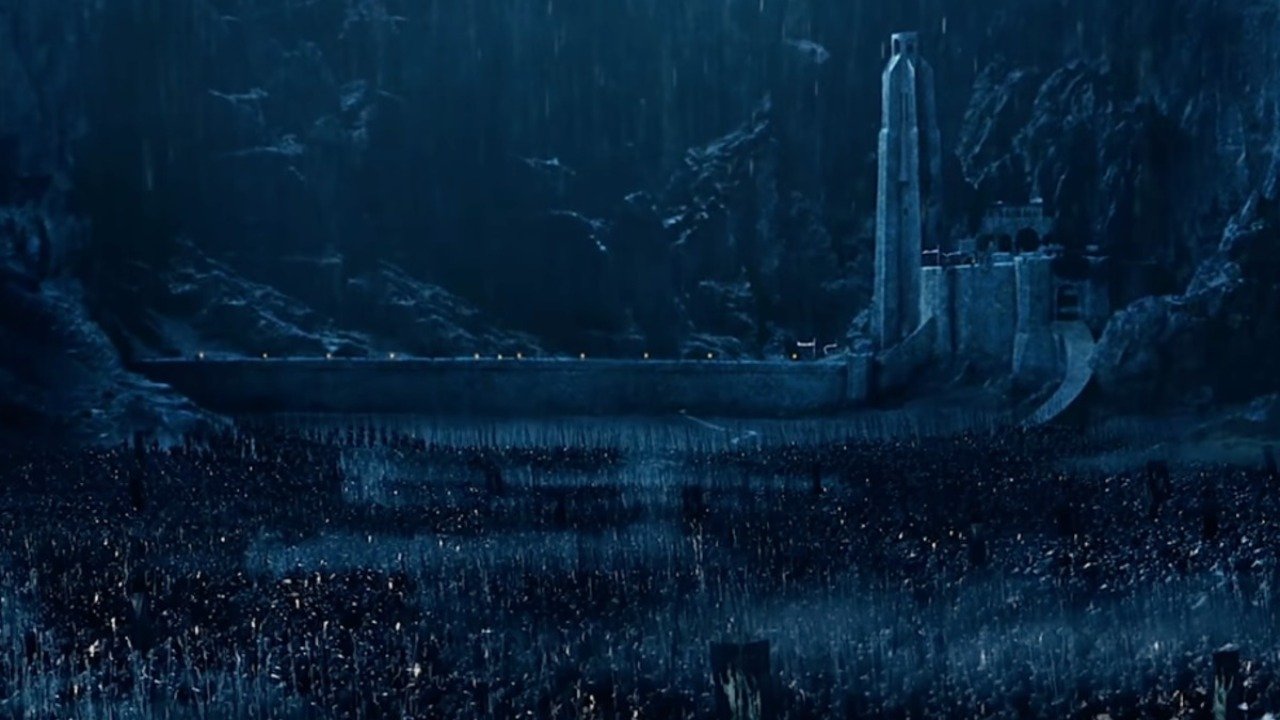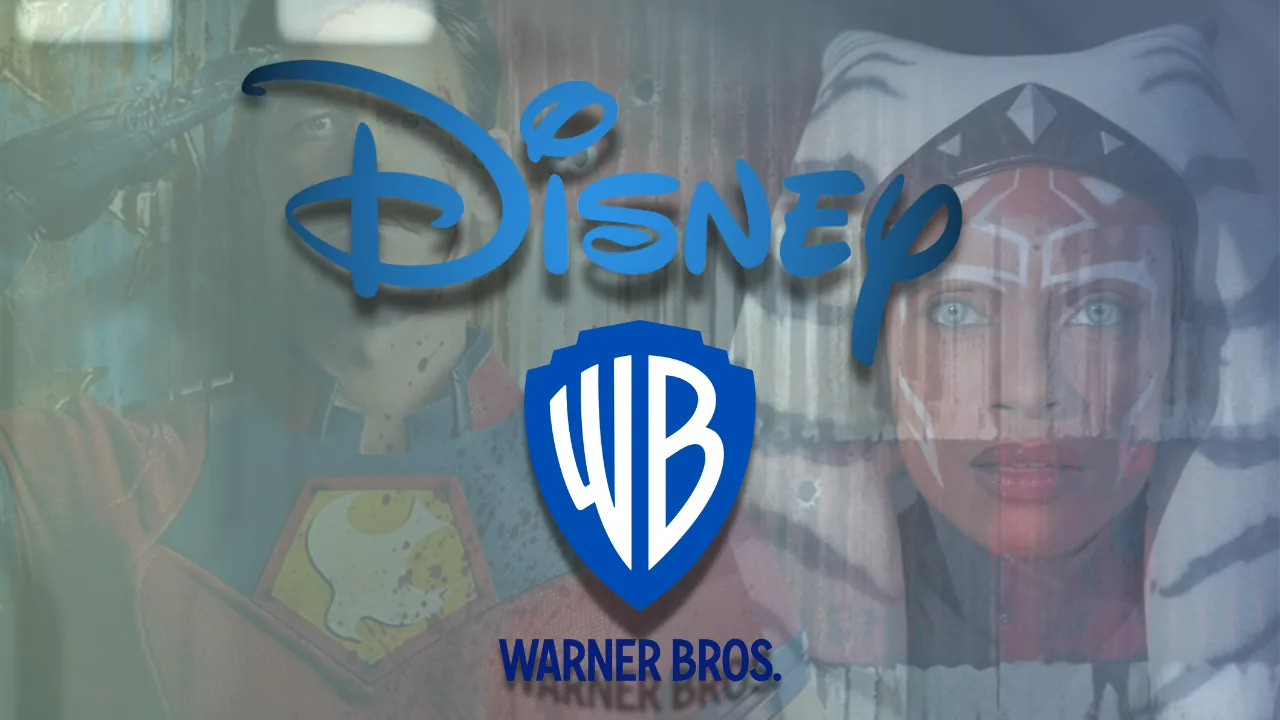What Is The State Of The New Republic During ‘The Mandalorian’
Image Source: Star Wars Official Databank
The New Republic (NR) era has been the main focus of Disney’s recent Star Wars (SW) projects. Since the conclusion of the so-called “sequel” trilogy (Episodes VII, VIII, and IX), SW live-action shows have centered their attention on this period of the galaxy’s history. The rearrangement of power throughout the universe is an exciting topic that the shows have touched upon, but have never gone deep enough to explain to the public some key details.
In our article, the goal is to talk about what is happening to the NR government throughout the The Mandalorian series. So, with that being said, the best course here is to try to separate the current status of the NR in its political, economic, and military spheres. A good reminder is that these 3 topics may intertwine sometimes; they do not function separately at all. Consequently, the different sections of the article are not clearly defined per part.
RELATED:
To control or to not control?
Image Source: Star Wars Official Databank
We got a small glimpse of what is happening to both the Imperial and Rebel fleet of ships used in the Galactic Civil War. The NR, as it seeks to establish its control throughout the (main) galaxy, is trying to pass on a good image of this new government. The way they aim to do this is by destroying the past, quite literally. During episode three of season three, called “The Convert”, we take a brief tour of Coruscant’s shipyards, where we see Imperial cruisers being dismantled, with the ultimate goal of profiting from parts and Imperial equipment that was also left behind inside the ships themselves.
This is not the only example we have of this instance. Ahsoka’s episode two, “Toil and Trouble”, demonstrates this too. While on a mission to Corellia to find out where Morgan Elsbeth's power and resources had been coming from, Ahsoka along with Hera and Chopper find out that the shipyard manager had been dismantling hyperdrive-capable engines. These engines were vital to Elsbeth’s plan to find Grand Admiral Thrawn from Peridea and get him back to the main galaxy.
In addition to this, not capitalizing on the fragility and lack of central authority in a leaderless galaxy was - at the very minimum - a questionable choice by the NR. They tried to create this new-found peaceful era by doing what most International Relations intellectuals call as a “retrenchment”. As one power moves away from being a main actor and the “leviathan” (in reference to Niccolò Machiavelli's incredible piece from 1532, “The Prince”), others may seek to take over their own regions by the use of coercive methods.
Both The Mandalorian and Ahsoka series demonstrate this quite well. The small fleet that the NR kept to police the thousands of systems around the galaxy was not enough. Some Calamarian light cruisers and a handful of X-Wings per convoy were not enough, for example, when the Mandalore/Moff Gideon crises erupted during the later part of Mandalorian’s season three.
Image Source: The Telegraph
Carson Teva, a character who has been getting a lot of screen time over the past few years, recognized this quickly. But he as a pilot cannot do anything. One single fighter is not enough to combat the return of Thrawn. Teva knows this, Hera knows this, but NR politicians - mainly Hamato Xiono - were reluctant to face the threat of war once again, trying to put this all behind them. Hiding from reality is never a good characteristic of a representative, especially one present in the NR’s War Council. Xiono is just the face of the problem, but his conversation with Hera amidst the possibility of Thrawn’s return shows us his true alliance - power. Most people who gain power have sociopathic traits, being okay with using others as mere steps to reach their goals. While Xiono argues that Hera is using the event on Corellia as an excuse to waste NR’s scarce resources, Hera reminds him of something important: “Were you ever in the war, Senator? or just sat back and waited to see who came out on top?”. Xiono was put back in his seat after this.
Xiono’s comments make sense, but not as much as he is giving credit to. Rebuilding a whole galaxy after 20 years of authoritarian control is not easy and also not cheap. But putting this as the base of a crucial security agenda does not justify his arguments. Hera, a proven general and leader over many years during the Rebellion’s golden years, has all the right to question his comments. The NR failed in its mission to protect people. The Rebel Alliance’s goals were incorporated into the Galactic Senate’s well-known bureaucratic structures. Thus, the point of no return had already been passed. The resistance to change increased along with the overlooking of the appearance of old and new threats to the NR.
Internal and external issues at the same time
Image Source: Entertainment Weekly
While some systems and planets have proved themselves worth their weight in gold peace-wise - like Lothal for example - others are facing threats that were thought to be over. The NR’s amnesty program was a good idea - in theory. Absorbing former Imperial agents and soldiers was meant to be more than just a public relations stunt, giving these people a new sense of purpose and maintaining - with a few restrictions - their freedom to come and go as they please.
This idea backfired. Like it was displayed in The Mandalorian, people like Dr. Pershin and Elia Kane were not ready to be reintegrated into society. Kane is the main example of this. She continued to work for Gideon, even though she joined the amnesty program. A double-agent, some would call. The involvement of such people in important sections of the NR’s government created a situation similar to what happened in MCU between World War 2 and Captain America: Winter Soldier. As former Hydra agents and scientists got the opportunity to be part of the American government - mainly S.H.I.E.L.D., their tentacles were quickly wrapped around the very people who hired them.
Espionage has always been a vital part of warfare and intelligence gathering as well. Having people like Kane and her Imperial colleagues take part in a rebuilding society - ideologically and politically - could have been a good idea, but did not function as well as it was planned. Instead, these people capitalized on their skills to be informants to Gideon and also to Imperial remnants in general.
Besides this, the NR's capacity to identify these threats has also been tempered. Just like the Jedi Order was involved by the dark side of the force during the years that preceded the Clone Wars and throughout the conflict as well, the NR found themselves stuck in an ever-growing amount of quicksand.
Being one step ahead of your enemy is always a good plan, but the NR seems to be forever five behind. Not recognizing the Empire (even a weaker one) as a major galactic actor is a huge mistake. Considering Thrawn as no longer a problem is another big one. The heroics of the Jedi should have been considered - at this point of the timeline - as a reality. But people like Xiono suffer from a lack of long-term vision. This is something that Hera and Mon Mothma have, fortunately. But Mon is now a big part of the NR, so she is chained to their decisions, as idiotic as they are most of the time. Hera, although, has some restrains - but not all of them. She is a wild card on some occasions, an ideal feature for good leaders to have.
Image Source: Entertainment Weekly
Outside of the NR’s own government, there are other major players doing what they must to survive. These people are enjoying the lack of a strong military to practice heists, jailbreaks, and random attacks in order to seize control. Even if the NR does not have enough resources to patrol the whole galaxy and control hyperspace lanes, they have to be able to stop these events from happening. It is highly prejudicial to their own security to allow such events to occur. Of course, increasing military expenditure to the point of neglecting your own population is never the solution. But, in this case, marginalizing this extremely important part of their administration in this new era is not the solution. Mando’s season one episode 6 and Ahsoka’s episode one highlight this perfectly. The former was a ship containing prisoners that was broken into and seized by mercenaries. Even if Mando was a tie-breaker for the merc team, this should not have been easy for them to do. The latter shares lots of similarities. Two force-users in Baylan and Shin, both wielding lightsabers, make a big difference in combat. But after Order 66 and the Imperial rule of Darth Vader and his inquisitors, better security measures should have been put in place to minimize these issues.
Where do we go from here?
Image Source: Disney+
As Dave Filoni slowly connects the Original Trilogy more and more with the Sequels during this “inter-war” period per se, a build-up to the state of the NR during the Sequels will probably make things better for SW. This has been one of the main critiques coming from fans because even though there are lots of Expanded Universe/Legends books that cover this period, they are not recognized by Disney whatsoever. So, The Mandalorian and Ahsoka are doing a great job in connecting the dots, something that we desperately need for the saga to function as a Japanese train - on time, perfect, and well-planned. Filoni’s shows are also providing enough innovation for this connection to not be forced on fans.
The best metaphor for this moment of the saga is a gradient, not two different colors side-by-side. Thus, showing how both the NR and Imperial Remnants provide enough for the rise of the First Order to make more sense. Maybe, a decade from now, this amount of New Republic content will do the same good that the 2008 Clone Wars animated series did to the Prequels. If the intention is to do a build-up, let’s do this in the best way possible, filling - if possible - all the gaps that still exist.
READ NEXT:
Sources: Ahsoka’s IMDB page, The Mandalorian’s IMDB page, TV show Transcripts
Join The Team

